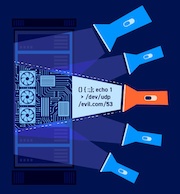DAST
Setup guide: Kubernetes instance
-
Last updated: December 16, 2025
-
Read time: 1 Minute
You can deploy Burp Suite DAST to any x86-based Kubernetes cluster that meets the prerequisites for installation. In this section, we'll explain how to deploy Burp Suite DAST to Kubernetes.
Please note that in order to reuse an existing Burp Suite DAST license with a Kubernetes instance you would need to decommission your existing setup. Each server license corresponds to a single running instance of Burp Suite DAST.
For information on what we're able to support you with when installing Burp Suite DAST on Kubernetes, see Support scope for Kubernetes instances.
Related pages
- Architecture overview
- Kubernetes scanning resources overview
- Configuring your environment network and firewall settings
- System requirements for a Kubernetes instance
- System requirements for your external database
- Setting up the external database
- Deploying Burp Suite DAST to Kubernetes
- Setting up a suitable Kubernetes cluster
- Installing the application
- Creating the admin user
- Activating your license
- Configuring your web server
- Updating Burp Suite DAST on Kubernetes
Next step - Architecture overview


